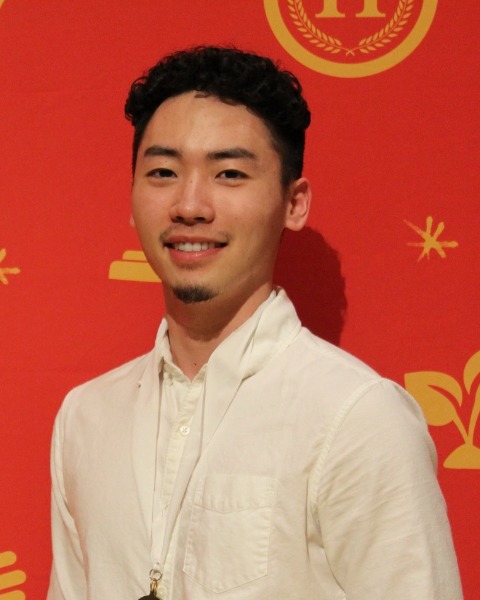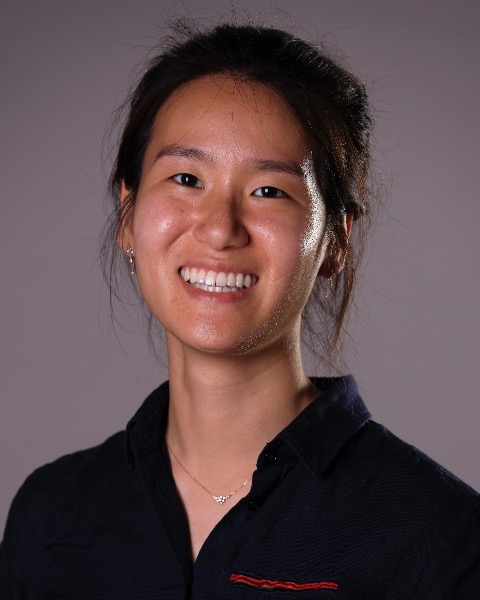Cellular and Molecular Bioengineering
Cellular and Molecular Bioengineering - Poster Session E
U36 - Spatiotemporal Profiling of the Tumor Immune Microenvironment
Saturday, October 11, 2025
10:00 AM - 11:00 AM PDT
Location: Exhibit Hall F, G & H

David Reynolds
PhD Student
University of Pennsylvania
Philadelphia, Pennsylvania, United States
Jina Ko, PhD
Assistant Professor
University of Pennsylvania, United States
Presenting Author(s)
Primary Investigator(s)
Introduction: : The tumor immune microenvironment (TIME) is a complex system, composed of immune and cancer cells, tissues, and other biological components, that play an important role in the regulation and progression of cancer. Traditional methods like flow cytometry and scRNA-seq have frequently failed to capture the complex biology and mechanisms that drive immune cell interactions within this environment. However, advancements in spatial transcriptomics have transformed our understanding of cellular heterogeneity, enabling the identification of new cellular interactions and functional dynamics between different cell types and their microenvironments that were previously elusive. Spatial transcriptomics builds upon the principles of single-cell transcriptomics by preserving the spatial information of gene expression within tissue samples. This technology allows researchers to study gene expression in the context of tissue architecture, providing a more complete understanding of the cellular function and interactions between cells. Although this method preserves spatial molecular information, it only provides a snapshot of gene expression at a single point in time, limiting our ability to track molecular changes over time. To address this limitation, we propose a new method for spatiotemporal monitoring of live tissue transcriptomics, allowing us to capture how immune cells interact and respond to changes in the TIME during tumor development. In particular, we have engineered a nanostraw array with an electrophoresis setup for RNA extraction from live cells with high viability, and optimized a next-generation sequencing (NGS) spatial barcoding tool to preserve the spatial context of RNA molecules post-extraction, allowing for longitudinal cell tracking.
Materials and
Methods: : Nanostraws were fabricated using a polycarbonate track-etched (PCTE) membrane with 200 nm pores as a template, followed by atomic layer deposition (ALD) of Al2O3, reactive ion etching (RIE) to remove the surface coating, and oxygen plasma etching to eliminate the polycarbonate, forming ~400 nm diameter, ~800 nm height hollow nanostraws. A custom chamber was assembled using the nanostraw membrane, a 5 mm acrylic reservoir, and an indium tin oxide (ITO)-coated glass slide to enable electrophoretic RNA extraction. HEK293 and A549 cells were cultured on the membrane, and intracellular RNA was extracted by applying an electric field for varying durations. Extracted RNA was collected from beneath the membrane, converted to cDNA, and analyzed by qPCR.
To spatially capture extracted RNA, we adapted the Deterministic Barcoding in Tissue for Spatial Omics Sequencing (DBIT-seq) platform for use on ITO glass. The glass was first silanized with (3-Aminopropyl)triethoxysilane (APTES) and treated with glutaraldehyde to introduce aldehyde groups for covalent attachment of amine-modified capture probes. Optimal silanization conditions were determined by testing varying silane concentrations and incubation times. DBIT-seq barcoding was then performed by sequentially flowing Barcode A (amine-modified) and Barcode B (polyT) oligonucleotides, along with a ligation linker, through orthogonal microfluidic channels to generate a grid array of barcodes. Fluorophore-labeled complementary probes were used to confirm barcode deposition.
Results, Conclusions, and Discussions:: We fabricated ~400 nm diameter, ~800 nm height hollow Al2O2 nanostraws to enable intracellular extraction. HEK293 and A549 cells cultured on the nanostraws showed high viability (95%), comparable to standard culture. Applying a 30 V electric field for varying durations revealed optimal RNA extraction at 40 seconds, with >95% viability maintained 24 hours post-extraction, confirming that nanostraw-based electrophoresis enables efficient RNA sampling with minimal cell damage. We validated intracellular extraction by comparing mRNA profiles from nanostraw-based and traditional lysis methods, showing a strong correlation across genes. Housekeeping gene expression remained unchanged 48 hours post-electrophoresis, indicating minimal transcriptional disruption. Longitudinal monitoring of eGFP expression over two days and RNA tapestation confirmed consistent RNA quality and minimal background contamination.
Using the DBIT-seq platform, we were able to spatially capture and preserve RNA molecules extracted via nanostraws on an ITO glass surface. Unlike its original use in tissue, we modified the system to work on ITO glass by functionalizing the surface to create aldehyde groups for anchoring amine-modified capture probes. Using this optimized surface, we employed DBIT-seq’s microfluidic barcoding system to generate a barcode grid. After validating barcode formation using complementary fluorophore-labeled probes, we incubated a PolyA-F probe on top of the nanostraw membrane and applied an electric field to drive the probe through the nanostraws onto the barcoded ITO glass surface. This demonstrated that molecules can be spatially transferred and preserved through the nanostraw interface. We then incubated RNA on the barcoded surface, converted it to cDNA, and amplified it. cDNA tapestation confirmed successful RNA capture and high-quality cDNA generation suitable for sequencing.
The integration and optimization of the nanostraw array with the spatial barcoding platform enables the subsampling of RNA molecules from live cells, followed by spatially resolved capture and sequencing. With continued refinement, this platform will allow us to monitor live tissue in both space and time, enabling longitudinal transcriptomic profiling of the tumor immune microenvironment.
Acknowledgements and/or References (Optional):: Related works:
1. D.E. Reynolds, Y.H. Roh, D. Oh, P. Vallapureddy, R. Fan, and J. Ko. (2025) “Temporal and Spatial Omic Technologies for 4D Profiling.” Nature Methods. https://doi.org/10.1038/s41592-025-02683-6
2. D.E. Reynolds*, Y.H. Roh*, U. Chintapula, E. Huynh, P. Vallapureddy, H. H. Tran, D. Lee, M. G. Allen, X. Xu, and J. Ko. (2025) “Vertically aligned Nanowires for Longitudinal Intracellular Sampling.” ACS Nano, 19, 13, 13073–13083. https://doi.org/10.1021/acsnano.4c18297 (Joint first author*)
3. D.E. Reynolds, Y. Sun, X. Wang, P. Vallapureddy, J. Lim, M. Pan, A. Fernandez Del Castillo, J. C. T. Carlson, M.A. Sellmyer, M. Nasrallah, Z. Binder, D.M. O’Rourke, G.L. Ming, H. Song, and J. Ko. (2024) “Live Organoid Cyclic Imaging.” Advanced Science, 2309289. https://doi.org/10.1002/advs.202309289 (Hot Topic: Bioorthogonal Chemistry)
